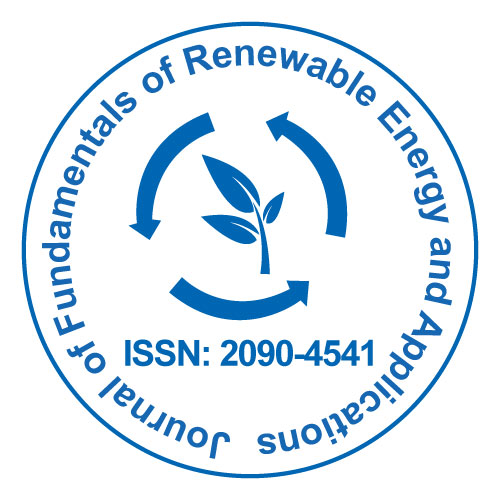
Journal of Fundamentals of Renewable Energy and Applications
Open Access
ISSN: 2090-4541
+44 1300 500008

ISSN: 2090-4541
+44 1300 500008
Arunkumar Jayakumar
Auckland University of Technology, New Zealand
Keynote: J Fundam Renewable Energy Appl
Proton Exchange Membrane (PEM) fuel cells are emerging as a commercially viable alternative for the production of clean and reliable energy. The Membrane Electrode Assembly (MEA) is the principal component of a PEM fuel cell. The operation of the fuel cell involves the hydrogen (fuel) being supplied to the anode and oxygen/air being fed to the cathode. At the anode region, the hydrogen is oxidized to protons and electrons the membrane allows protons to pass through it while the electrons are forced to travel through the external circuit. At the cathode, the oxidant is reduced and in this way, electricity is drawn from the cell. Figure 1 illustrates a single PEM cell, indicating various sub-components and the charge transfer. PEM fuel cell performance is meticulously correlated to the gas diffusion electrodes (GDE). GDE in a PEM fuel cell stack usually comprises of the catalyst layer and the gas diffusion layer and the present paper provides a comprehensive measurement issues pertaining to the characterization of GDE. Gas diffusion electrode characterization is complex, which involves the existence of both solid and fluid phases, and due to the random morphology of the diffusion electrode. However, these characteristics are very much significant to validate its role in the PEM fuel cell stack. The measuring instrument play a significant role in maximizing the efficiency and durability of the PEM fuel cell stack components; because "it is impossible to control the operating parameters without proper measurement". However, the measurement strategies involved in the GDE components is highly complex due to the non-linear behaviour during the PEM fuel cell operation. In the present paper, a holistic insight on all these measurement instruments and related challenges will be comprehensively dealt.
Arunkumar Jayakumar is a Research Fellow at Auckland University of Technology, New Zealand. He has 10 years of experience in PEM fuel cell stacks and systems. He has worked with wide range of Ballard’s stack namely, Nexa, 1020 ACS and 1310 WCS. His research activities include PEM fuel cell stacks and systems, sensor, electric vehicles, material characterization and hydrogen energy. His research is currently funded by the IBTec, AUT. He is a member of the IPENZ, IEEE and ASME.